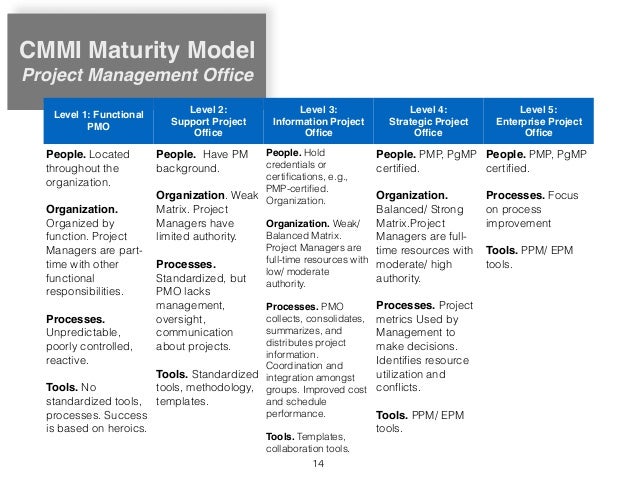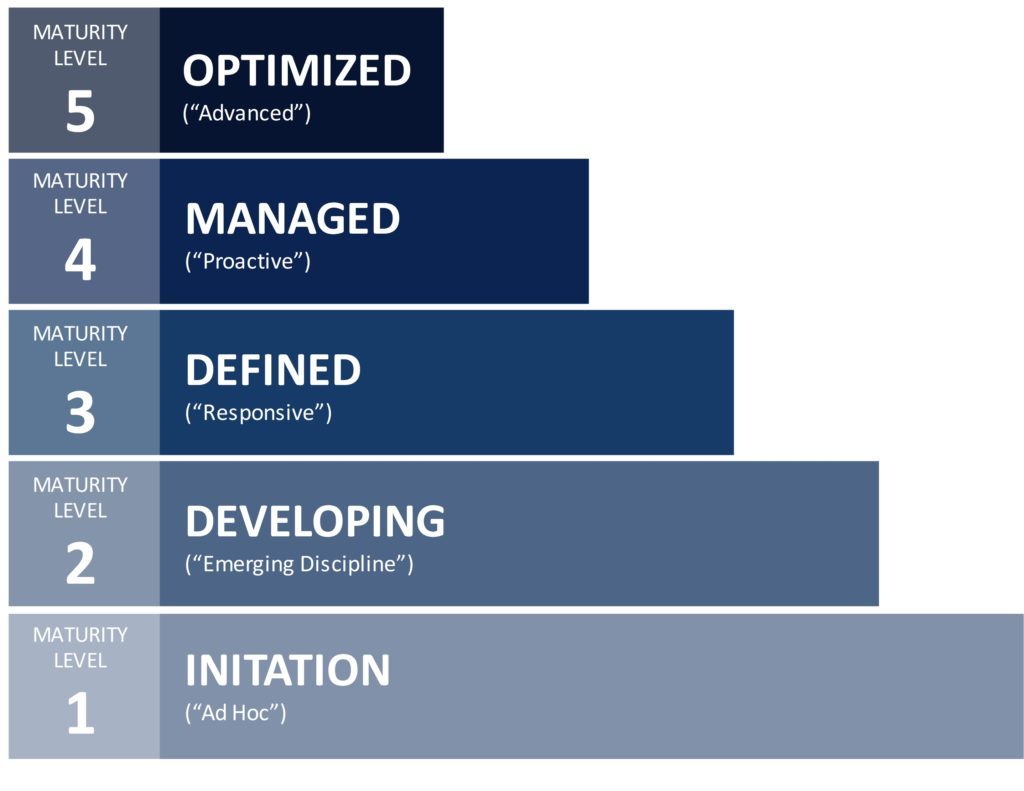
Summary
At maturity level 4, the organization and projects establish quantitative objectives for quality and process performance and use them as criteria in managing projects.

Description
. The Capability Maturity Model Integration (CMMI. Provides model, manages enrollment/de- enrollment, provides playbook for appraisers, provides. Guidelines found in the CMMI (Capability Maturity Model Integration) model from Carnegie Mellon University, and the P3M3 (Porolio, Program, and Project Management Maturity Model) from Axelos Limited. Although none of these models addresses PMO maturity specifically, they address general aspects related to project.
Project Management; Capability Maturity Model; Capability Maturity Model Integration; 23 pages. CMMI-DEV1.3Mod 11. Telkom Institute of Technology. UNIVERSITY 12345. The Capability Maturity Model Integration (CMMI) defines a Process Area as, 'A cluster of related practices in an area that, when implemented collectively, satisfies a set of goals considered important for making improvement in that area.' The Capability Maturity Model contains five stages to evaluate how sophisticated your organization is in establishing and following standard processes. The Five-Stage Capability Maturity Model (CMMI) (A5.1.P2 ) There are some slightly different interpretations of the CMMI.
Quantitative objectives are based on the needs of the customer, end users, organization, and process implementers. Quality and process performance is understood in statistical terms and is managed throughout the life of projects. For selected subprocesses, specific measures of process performance are collected and statistically analyzed. When selecting subprocesses for analyses, it is critical to understand the relationships between different subprocesses and their impact on achieving the objectives for quality and process performance. Such an approach helps to ensure that subprocess monitoring using statistical and other quantitative techniques is applied to where it has the most overall value to the business. Process performance baselines and models can be used to help set quality and process performance objectives that help achieve business objectives. A critical distinction between maturity levels 3 and 4 is the predictability of process performance. At maturity level 4, the performance of projects and selected subprocesses is controlled using statistical and other quantitative techniques, and predictions are based, in part, on a statistical analysis of fine-grained process data.
Cmmi Pmo Maturity Model
Contains

Cmmi Maturity Model Pmo Model

Cmmi Maturity Model Pmo 2020
- Organizational Process Performance (OPP) (CMMI-DEV)
- The purpose of Organizational Process Performance (OPP) (CMMI-DEV) is to establish and maintain a quantitative understan…
- Quantitative Project Management (QPM) (CMMI-DEV)
- The purpose of Quantitative Project Management (QPM) (CMMI-DEV) is to quantitatively manage the project to achieve the p…